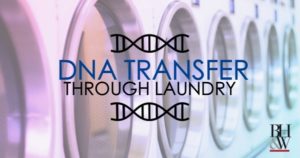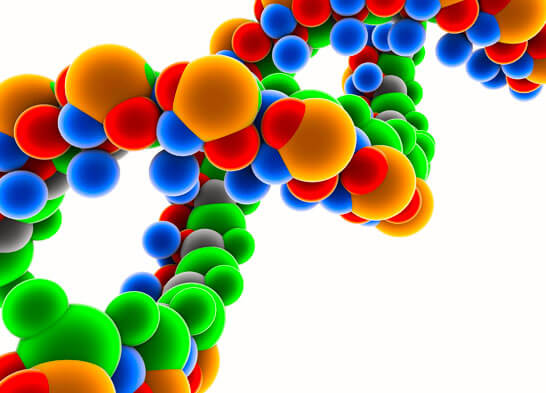What is Transfer DNA and Why is it Important in Criminal Cases?
 When a person thinks of DNA evidence, they typically think of blood, semen, or some sort of bodily fluid left at a crime scene that indicates a suspect in a crime. However, this is no longer the case. With the advances in technology, DNA can be detected from just sitting near another person. In a study done by Australian forensic scientist Roland van Oorschot, he found that in 50% of volunteers who sat at a table and shared a jug of juice they ended up with another’s DNA on their hands. The volunteers never touched one another and some of the DNA found was from individuals who were not even at the table. They found that DNA was much easier to transfer than anyone had previously thought. This means that at any given crime scene, there could be hundreds of DNA profiles. The DNA found by investigators could be from an innocent person or the suspect. This is concerning because, while there is a way to discover whose DNA it is, there is not a way to discern how it got there. Who’s to say they won’t find yours?
When a person thinks of DNA evidence, they typically think of blood, semen, or some sort of bodily fluid left at a crime scene that indicates a suspect in a crime. However, this is no longer the case. With the advances in technology, DNA can be detected from just sitting near another person. In a study done by Australian forensic scientist Roland van Oorschot, he found that in 50% of volunteers who sat at a table and shared a jug of juice they ended up with another’s DNA on their hands. The volunteers never touched one another and some of the DNA found was from individuals who were not even at the table. They found that DNA was much easier to transfer than anyone had previously thought. This means that at any given crime scene, there could be hundreds of DNA profiles. The DNA found by investigators could be from an innocent person or the suspect. This is concerning because, while there is a way to discover whose DNA it is, there is not a way to discern how it got there. Who’s to say they won’t find yours?
The DNA Phantom Case From Germany
That is exactly what happened in the case of the Phantom of Heilbronn. In Germany, DNA from one woman was found at crimes scenes ranging from murders to thefts. This woman’s DNA was connected to 40 crimes extending as far back as 1993 and covering the countries of Germany, Austria, and France. However, the DNA that was found did not belong to the perpetrator, it belonged to a woman who made the cotton swabs used to collect DNA samples from the crime scene. Even though the cotton swabs went through the proper sterilization process, they still contained traceable amounts of DNA. The Phantom of Heilbronn is an example of how easily DNA can be innocently transferred to a crime scene.
How DNA Can Be Transferred Through Laundry in Child Sexual Assault Cases
When it comes to child sexual abuse cases, researchers have found that DNA can be transferred innocently by the laundry even after clothes are supposed to be “clean.” A Canadian study discovered that when undergarments are washed with sheets containing bodily fluids, the undergarment too will have DNA on them. The DNA from the sheets transfers to the undergarments in the washer and the washer itself. This is problematic because a person’s DNA can end up on every household member’s clothing in one wash. This DNA can later be collected during an investigation, but investigators might make the wrong assumption as to how it got there.
To help distinguish between innocent DNA transfer from laundering and DNA that was left during a crime, the researchers studied the location of the DNA on the items of clothing. In the process of this experiment, the findings strongly suggest that bodily fluids that were transferred during laundering were absorbed deeper into the fabric. Swab samples that yield significant quantities of bodily fluids are indicative of the fluid being deposited directly on the clothing as opposed to transfer during laundering. DNA that is transferred during the laundering process is both found in a different location and lesser in quantity than DNA deposited through abuse.
What Does This Mean for the Future of DNA Analysis?
The findings from this research are important for the future of DNA evidence, especially in the case of child sexual abuse cases. This research shows that DNA does not immediately indicate sexual abuse. This research emphasizes that the mere presence of DNA on a child’s undergarments does not confirm abuse. Investigators should gather all available evidence before they come to a conclusion.










